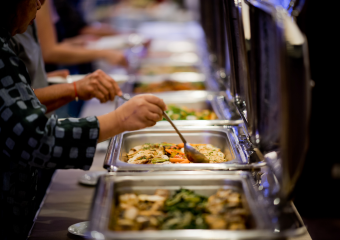I Tried Intermittent Fasting And I’ve Never Been More Energetic – British Vogue

There has been much said about intermittent fasting in the last few years. Unlike traditional diets that are all about what to eat, this focuses on when to eat, and some of the benefits include improved metabolic health and fitness levels. Keeping this in mind, I decided to try it. And I have to be honest, I didn’t think I would stick with it – the idea of not being able to eat for 16 hours seemed intolerable. Yet, with a little patience and willpower, I found myself appreciating this seemingly restrictive routine.
The idea behind intermittent fasting involves alternating periods of eating with periods of fasting to reduce inflammation in the body and, ultimately, manage fitness levels. For me, the positive effects quickly became evident. I felt lighter, had more energy in the mornings, experienced calmer evenings and even met my fitness goals. Despite the hours spent without food, the progress was gradual but evident and it emphasised the need for patience, particularly for long-lasting results and especially when combining fasting with physical activity.

The benefits of the intermittent fasting
Advocates of intermittent fasting have included oncologist Umberto Veronesi, alongside numerous experts who have emphasised how this way of eating can lower the risk of inflammatory diseases. Some specific benefits attributed to intermittent fasting include:
- A balanced, healthy approach to weight management
- Improved glycemic response and the body’s ability to use fat and glucose for energy
- Reduced inflammation throughout the body and trigger of autophagy, a process that helps the body get rid of damaged cells and replace them with new ones.
In addition to its physical benefits, intermittent fasting can pose significant challenges. Some people report feeling more tired, fatigued, constantly hungry and irritable however, I found it has helped increase my energy levels and has enhanced my concentration levels, too. It has also amplified my desire to maintain a healthy diet, allowing me to feel satisfied without overindulging.

How to do intermittent fasting
The 16:8 intermittent fasting pattern
When talking about intermittent fasting, the most common method that comes to mind is the 16:8 fast. This includes fasting for 16 hours and then having an eight-hour window for eating – a variation of this approach is cancelling dinner altogether. However, this didn’t work for me – whether after a busy day at work or on weekends, dinner time is when I have the chance to connect with friends and family, so giving it up wasn’t something I was prepared to do. So very quickly I learnt that the key to sustaining fasting, especially in the initial days, is choosing a time frame that aligns with your schedule.
For those who need a lot of energy during the day, it can be helpful to eat between 9am and 5pm, so that you can have breakfast, lunch, a snack and then an early dinner. I chose to eat between 12pm and 8pm because skipping breakfast was never a problem, especially having perfected the art of timings so that I could eat lunch leisurely, have a mid-afternoon snack and indulge in a relaxed dinner.

The 5:2 method

In this fasting pattern, the week is divided into five normal eating days and two days of fasting, or however you want to manage a severe calorie restriction period. I also tried the the 5:2 and while it did accelerate my weight loss, I found it extremely challenging to manage an entire two days with only 700 calories. Of course, on the “free” days, it’s crucial to be mindful of your food choices, favouring grains, vegetables, olive oil and dried fruits while avoiding fruits and heavily processed foods.
The OMAD variant
OMAD or One Meal A Day, entails a 23:1 pattern, where only one meal is consumed each day. It’s crucial to maintain a strict nutritional balance, with an equal distribution of carbohydrates, fat and protein. You can also have calorie-free drinks such as water, tea or coffee. This OMAD is notably restrictive, so it’s important to check with a medical professional before trying it.
When followed diligently, intermittent fasting can prove to be a balanced approach to eating healthy. The flexibility to structure the fasting period according to personal preferences, whether by scheduling specific days or time slots, can offer a lot of freedom which you might not have thought possible. And while willpower is essential, maintaining commitment becomes easier if you make sure you have a well-balanced range of foods. Despite thinking I might feel hungry while following an intermittent fasting plan, I didn’t. The initial results were encouraging, spurring me on to continue following it and it also motivated me to exercise. Try it, you might also wake up feeling active, energetic and revitalised in the morning.
Always seek medical guidance from a professional when embarking on a new eating and exercise plan.





